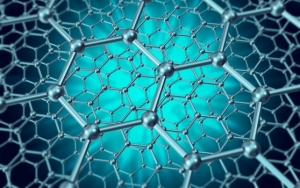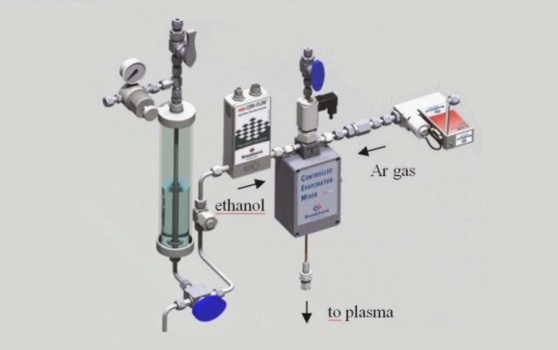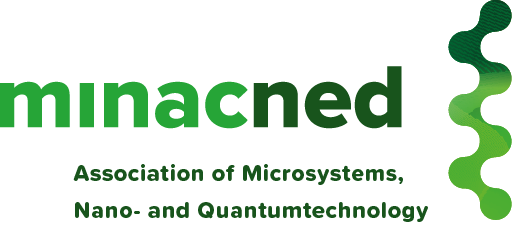A blog by Gerhard Bauhuis, Technical Sales Advisor at Bronkhorst.
The ‘Graphene Flagship’ is a Future and Emerging Technology Flagship by the European Commission. On April 3rd, 2020 they announced to be in transition to the so-called ‘Core 3’ stage, the fourth funding cycle of the €1 Billion research initiative funded by the European Commission.
In this three-year phase of the project, the Graphene Flagship expects to advance much further towards the commercialization of graphene and layered materials. While keeping an eye on fundamental research, the Graphene Flagship Core 3 will have a special focus on innovative research to boost graphene-enabled technologies to higher technology readiness levels.
What is graphene?
Graphene can be subdivided in three different types: single-layered, double-layered and multi-layered graphene:
- Single-layered graphene is the purest form available with with unique characteristics. These characteristics make (single-layered) graphene an attractive product for a large number of applications.
- Double-layered as well as multi-layered graphene have other (less qualitative) characteristics.
As the number of layers increases, it also becomes increasingly cheaper to produce. In this blog I limit myself to only single-layered graphene, because as of today this type still gives the best result in various research.
Graphene is the world’s first 2D material that consists of only a single atomic layer of carbon; the same material that’s used in diamonds and penciltips. The carbon atoms in graphene are ranked in a hexagon structure. Single-layered graphene is characterized by the following properties
- 200 times stronger than steel
- 1.000.000 times thinner than a single human hair
- The world’s lightest material (1 m² weighs about 0,77 milligram)
- Flexible
- Transparent
- Impenetrable for molecules
- Excellent electrical and heat conduction
Graphene can also be combined with other materials, such as gases and metals, to produce new materials with the abovementioned properties or to improve existing materials. At this point there isn’t a method available yet to produce graphene on a larger scale against acceptable costs. However, this is still being researched.
Plasma Enhanced Chemical Vapour Deposition (PE-CVD)

Bronkhorst, 3D-model structure of graphene
There are a couple of different methods to produce graphene. One of the most common methods in single-layered graphene production is Plasma Enhanced Chemical Vapour Deposition (PE-CVD). In this method, a mixture of gases – in which at least one gas contains carbon – is heated until a plasma has formed. Mass flow meters and controllers are used in CVD processes to dose gases and liquids accurately.
In PE-CVD the plasma forms a graphene layer on a nickel or copper substrate. Heating takes place in a vacuum, but a more ‘green’ CVD process can be used as well, in which heating takes place under atmospheric pressure. By using Chemical Vapour Deposition large sheets of graphene can be produced.
Some of the precursors are liquids that need to be evaporated first, to be used in the CVD process in its gaseous form. It’s very important that the plasma is created with the right proportions and precision. This can be achieved by using highly accurate flow instruments. A deviation in the plasma can cause defects in the graphene layer. Defects can be impurities in the 2D structure that can change the unique properties of the material.
Research for high quality graphene by using atmospheric pressure plasma-based techniques

Bronkhorst CEM system for research at the University of Cordoba
Our Spanish distributor, Iberfluid Instruments S.A, recently cooperated with the University of Cordoba in a research to investigate the opportunities regarding graphene production on a large scale by using a plasma based technique under atmospheric pressure. In this research ethanol was evaporated with the use of Bronkhorst evaporation system, the so-called Controlled Evaporation and Mixing (CEM) system, to form a plasma. With the use of an evaporation system liquids are being evaporated directly to create the right gas for the plasma. A possible setup of such an evaporation system can consist of a CEM system with an additional liquid flow meter (i.e. a Coriolis mass flow meter, from the mini CORI-FLOW series) for ethanol, a gas flow controller (i.e. an EL-FLOW mass flow controller) for argon, which functions as a carrier gas and finally a temperature-controlled control valve or mixing valve.
An evaporation system like the Bronkhorst CEM system can deliver excellent performance in terms of stability and accuracy. These properties guarantee a reliable creation of plasma, which eventually leads to higher quality graphene.
In the research document ‘Scalable graphene production from ethanol decomposition by microwave argon plasma torch’ is described why the University of Cordoba (ES) uses the Bronkhorst Controlled Evaporation and Mixing system in the PE-CVD graphene production process.
Areas of application for graphene
Due to a large amount of unique properties research takes place in numerous areas of application. The main focus is on single-layered and double-layered graphene. For now it seems that single-layered graphene still gives the best results. At the same time the use of so-called flakes has been taken into account. These flakes are tiny pieces of graphene which can be mixed with another material, such as polymers. The properties of these materials can be improved by adding graphene flakes, which makes graphene widely applicable in different industries. A couple of examples based on single-layered graphene:
- Water purification: Scientists are currently developing an advanced filtration system based one graphene oxide that is being used to make polluted water drinkable.
- Medical industry: Since graphene isn’t poisonous for the human body, research is being done to the possibilities to use graphene in medicine transport in the body, by attaching the medicine to the graphene. Graphene also has the properties to prevent bacteria formation, which makes it ideal to use as a coating for implants.
- Energy industry: Because of the large surface and excellent electrical conduction, graphene could be used in energy storage. The goal is to make graphene batteries more compact than they are now, while increasing the capacity to make it possible to charge batteries within seconds.
- Textile industry: Graphene could be used to process electronics in textiles, such as effective, efficient and highly accurate sensors. Furthermore, graphene anti-corrosion coatings and conductive inks can be made.
- Semiconductor industry: Thanks to good electrical and thermal conductivity, graphene offers possibilities to increase the speed and capacity of chips (for computers and smartphones).
Would you like more information about graphene?
Read our application note about the setup used at the University of Cordoba or download the research of John Bulmer, scientist at the University of Cambridge, about ‘Forecasting continuous carbon nanotube production in the floating catalyst environment’.
Read application note (Bronkhorst website)
Download the research (Science Direct, Elsevier)
Source blog post: Bronkhorst

